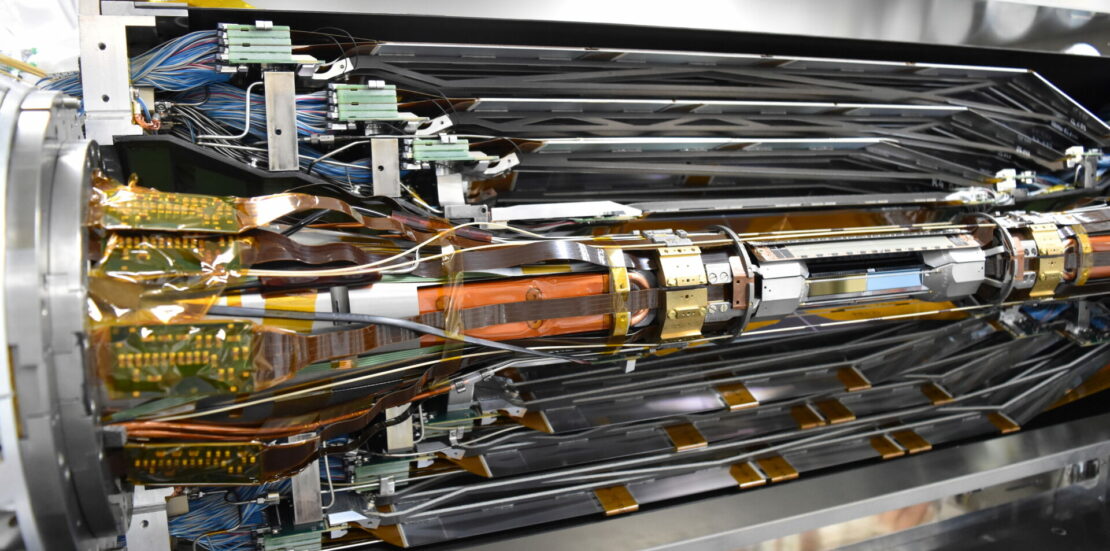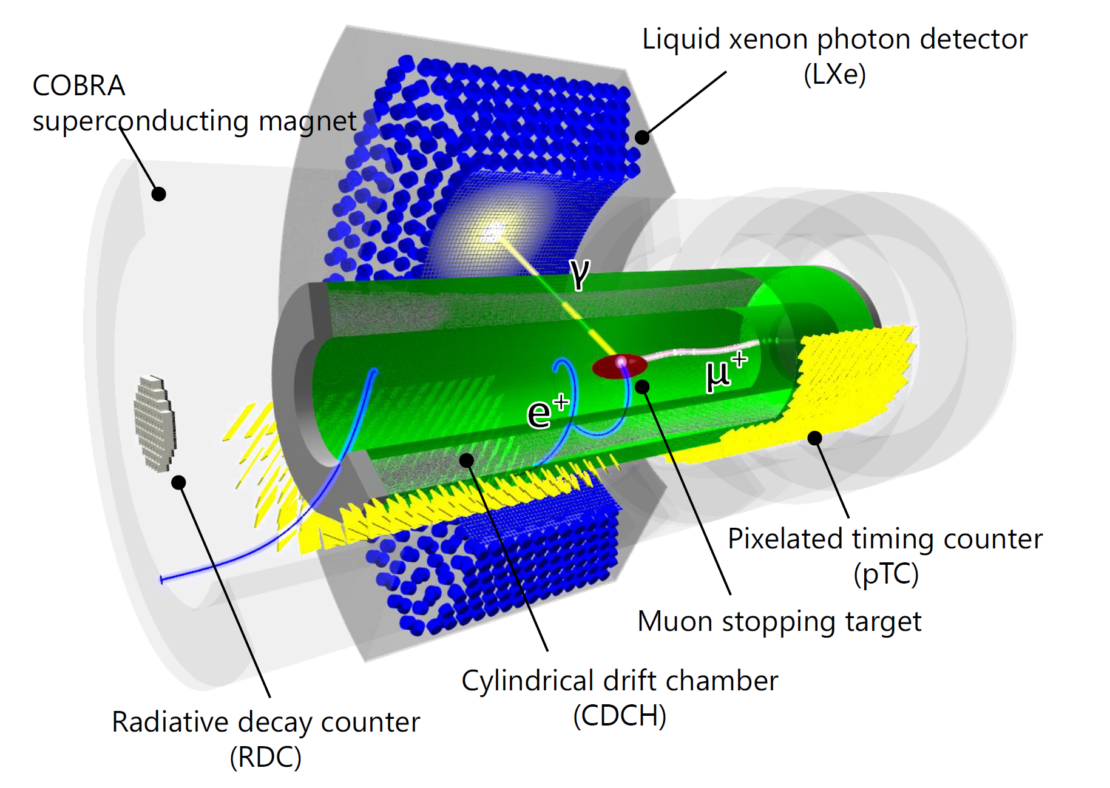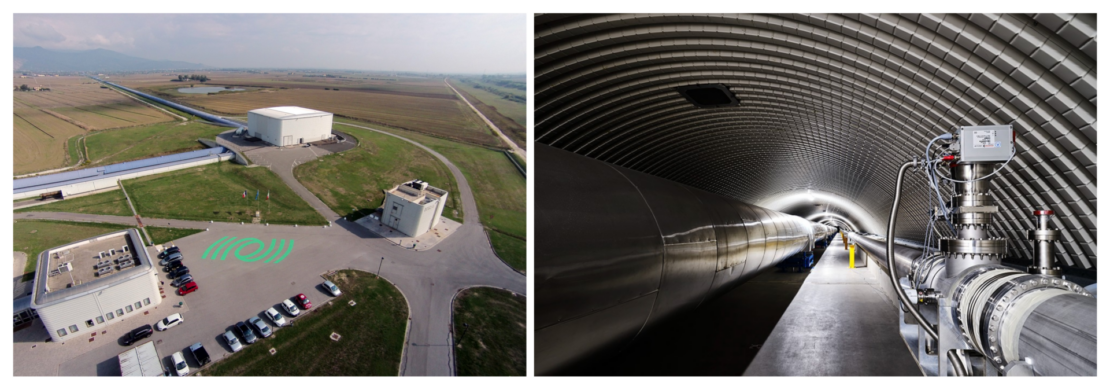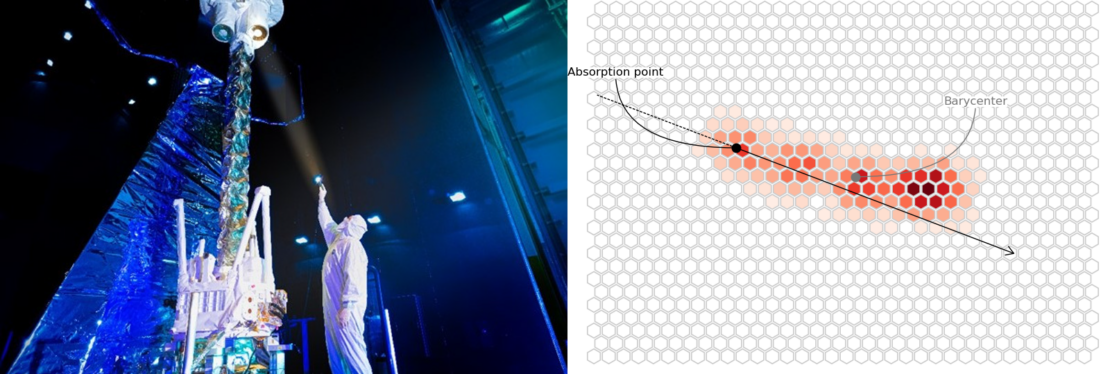The research activity in the area of Fundamental Interactions is carried out in strong connection with the Pisa branch of the National Institute of Nuclear Physics (INFN) and pursues the experimental and phenomenological characterization of forces between elementary particles in Nature.
Such investigations span customarily over electro-magnetic and nuclear interactions, and more recently they have been extended to the experimental study of large-scale gravitational interactions. The phenomenology of these interactions is generally well-described by the Standard Model of Fundamental Interactions, which nonetheless is incomplete from both the theoretical and the experimental point of view, being unable to provide satisfactory explanations for many phenomena, such as dark matter and dark energy, the huge differences in particle masses, the predominance of matter over anti-matter in the present Universe. The experimental research of phenomena that can help complete the Standard Model description is one of the focal points of the activities in the area, in strong connection with the theory area.
Scientific activities are mostly performed within international collaborations, often involved in experiments hosted by research laboratories for elementary particle physics, nuclear physics and gravitational waves.
Specific topics under investigation are vastly different, spanning over all the main sectors at the frontier of knowledge in the field, subdivided in energy frontier, intensity frontier and cosmic frontier. They can be schematically grouped as follows:
Research based on particle accelerators, with experiments focused on the test of the Standard Model, the measurement of its free parameters and the search for new physics phenomena (link):
- research at energy frontier, both through direct production of new particles, and indirectly through precision measurements (experiments ATLAS, CMS, TOTEM, at CERN);
- research at the intensity frontier in processes changing the hadronic flavor at hadron or lepton colliders (experiments LHCb at CERN, Belle II at KEK) and in fixed-target reactions (experiment NA62 at CERN);
- research at the intensity frontier in lepton-flavour violating processes (experiments MEG at PSI, Mu2e at Fermilab), and precision measurements of static properties of the muon (experiment muon g-2 at Fermilab, project MuonE at CERN).
More information: https://www.pi.infn.it/?page_id=28.



Research based on cosmic radiation in underground laboratories, high atmosphere or space, focused on the search for new astrophysical phenomena or issues related to cosmological-scale processes (link), carried out in collaboration with the astrophysics area:
- experiments on charged cosmic radiation (CALET, MAGIC, AMS-02), high-energy electromagnetic radiation, including gamma rays (CTA, Fermi) and X-ray polarization studies (IXPE, e-XTP), neutrinos of astrophysical origin (KM3NeT);
- measurement of the properties of the cosmic microwave background radiation (LiteBIRD, LSPE);
- direct search of dark matter (Darkside at LNGS) and of exotic particles of cosmic relevance such as axions (QUAX, STAX, AXIOMA);
- Gravitation physics research, through direct detection of gravitational waves (VIRGO at EGO, Einstein telescope) and tests of general relativity (GG, GINGER, MAGIA).


Most of these experiments are supported through INFN and dedicated funding obtained via local, national and international competitive grants, and belong to inter-disciplinary projects of national or international interest.
Cross-field research and development activities synergistic with the experimental areas of condensed matter and medical physics also exist, developing innovative detection techniques, instruments for data selection and acquisition in extreme conditions in terms of environment or performance, advanced techniques for data analysis, as well as instruments focused on technological applications (link).
Among strategic activities are also research and development linked to the conception and design of new large infrastructures such as high-energy particle colliders, under discussion in the international scientific community. The directions of the international strategies for fundamental interaction physics will provide guidance for the activities of the area, keeping in mind that many of the existing experiments have multi-year programs and commitments.
It is foreseen a growth in the synergistic activity across the various experiments and in the interdisciplinary collaborations.
Last updated on: 20/07/2023

